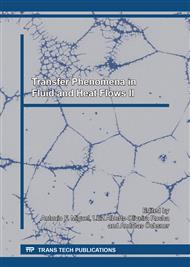[1]
L. Hitzler, A. Charles, A. Öchsner, The Influence of Post-Heat-Treatments on the Tensile Strength and Surface Hardness of Selective Laser Melted AlSi10Mg. Defect and Diffusion Forum 370 (2016) 171-176.
DOI: 10.4028/www.scientific.net/ddf.370.171
Google Scholar
[2]
M.J. Matthews, G. Guss, S.A. Khairallah, A.M. Rubenchik, P.J. Depond, W.E. King, Denudation of metal powder layers in laser powder bed fusion processes. Acta Mater 114 (2016) 33-42.
DOI: 10.1016/j.actamat.2016.05.017
Google Scholar
[3]
M.R. Alkahari, T. Furumoto, T. Ueda, A. Hosokawa, Consolidation characteristics of ferrous-based metal powder in additive manufacturing. Journal of Advanced Mechanical Design, Systems, and Manufacturing 8 (2014) JAMDSM0009.
DOI: 10.1299/jamdsm.2014jamdsm0009
Google Scholar
[4]
L. Hitzler, C. Janousch, J. Schanz, M. Merkel, F. Mack, A. Öchsner, Non-destructive evaluation of AlSi10Mg prismatic samples generated by Selective Laser Melting: Influence of manufacturing conditions. Mat-wiss u Werkstofftech 47 (2016) 564-581.
DOI: 10.1002/mawe.201600532
Google Scholar
[5]
L. Hitzler, J. Hirsch, M. Merkel, W. Hall, A. Öchsner, Position dependent surface quality in Selective Laser Melting. Mat-wiss u Werkstofftech IN PRESS (2017).
DOI: 10.1002/mawe.201600742
Google Scholar
[6]
G. Strano, L. Hao, R.M. Everson, K.E. Evans, Surface roughness analysis, modelling and prediction in selective laser melting. J Mater Process Technol 213 (2013) 589-597.
DOI: 10.1016/j.jmatprotec.2012.11.011
Google Scholar
[7]
L. Löber, C. Flache, R. Petters, U. Kühn, J. Eckert, Comparison of different post processing technologies for SLM generated 316l steel parts. Rapid Prototyping J 19 (2013) 173-179.
DOI: 10.1108/13552541311312166
Google Scholar
[8]
J.P. Kruth, M. Badrossamay, E. Yasa, J. Deckers, L. Thijs, J. Van Humbeeck (2010).
Google Scholar
[9]
B. Vandenbroucke, J.P. Kruth, Selective laser melting of biocompatible metals for rapid manufacturing of medical parts. Rapid Prototyping J 13 (2007) 196-203.
DOI: 10.1108/13552540710776142
Google Scholar
[10]
J. Schanz, M. Hofele, L. Hitzler, M. Merkel, H. Riegel Laser polishing of additive manufactured AlSi10Mg parts with an oscillating laser beam. In: Machining, Joining and Modifications of Advanced Materials. Springer, Singapore, 2016, pp.159-169.
DOI: 10.1007/978-981-10-1082-8_16
Google Scholar
[11]
L. Hitzler, C. Janousch, J. Schanz, M. Merkel, B. Heine, F. Mack, W. Hall, A. Öchsner, Direction and location dependency of selective laser melted AlSi10Mg specimens. J Mater Process Technol 242 (2017) 48-61.
DOI: 10.1016/j.jmatprotec.2016.11.029
Google Scholar
[12]
L. Hitzler, J. Hirsch, J. Schanz, B. Heine, M. Merkel, W. Hall, A. Öchsner, Fracture toughness of selective laser melted AlSi10Mg. P I Mech Eng L: J Mat IN PRESS (2017).
DOI: 10.1177/1464420716687337
Google Scholar
[13]
A. Öchsner, Continuum Damage and Fracture Mechanics. Springer, Singapur, (2016).
Google Scholar


